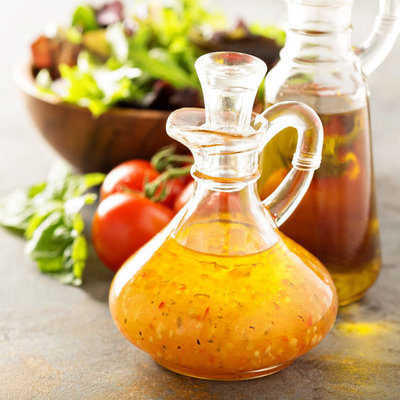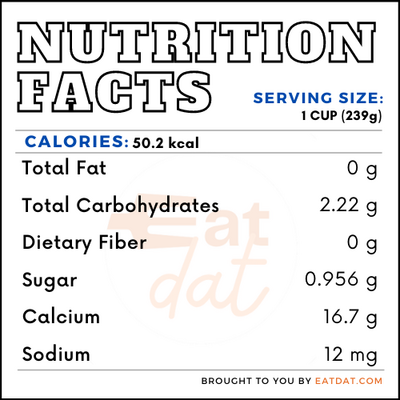
Vinegar
What is Vinegar?
Vinegar is a liquid solution of water and acetic acid made using a two-step fermentation process. The name for this ubiquitous solution originates from the French phrase “vin aigre” or sour wine, which is a nod to the flavor of this ingredient. Types include:
- wine
- balsamic
- apple cider
- rice
- distilled white
- malted
- flavored
In the US and the UK, the most popular type is apple cider, while grape-growing countries like Italy, France, and Spain prefer wine vinegar. In 2019, the global vinegar market reached $1.3 billion and is estimated to increase by 1.4% over the next five years.
The top 5 best apple cider vinegar brands in the US, according to Healthline are:
- Fairchild’s
- Bragg Organic
- Dynamic Health
- Kevala Organic Raw
- Vermont Village Organic
Origin of vinegar
It has been around for thousands of years with one of the oldest references to it dating back to the 500 BCE. Legend has it that this tart liquid was created alongside the oldest libations, including wine and beer. The first document was made from dates in 5,000 BCE in Babylonia. Archeologists also recovered vessels used for making this potent ingredient in Ancient Egypt and China around 6,000 BCE.
Modern vinegar evolved from Louis Pasteur’s discovery of how to use fermentation to convert alcohol into acetic acid in 1864. Following that revelation, the production of this tart liquid became more advanced and soon began to be used in various sauces. The 19th and 20th centuries saw the rapid advancement of food production technology and industrialization. These days, this potent ingredient can be found in most homes across America.
Function
This is extremely versatile in the kitchen, as it can enhance flavors, as well as help induce necessary chemical reactions in cooking and baking. While it’s common to use this liquid to craft salad dressings, it can also be used as a marinade. The rice variety is often used in Asian dishes to give flavor to rice, noodles, and other foods. The distilled white version of this liquid works for picking, baking, or even crafting natural cleaning products. Since balsamic is made using an artisanal approach, it’s usually used as a topping or a special ingredient in classic Italian dishes.
Nutrition
One cup (239g) of vinegar contains:

This flavorful ingredient has long been used for its medicinal purposes and continues to be used today for minor ailments. Although values vary depending on the type of vinegar, a tablespoon of this liquid can contain between 2-15 calories. This ingredient is sugar-free and low in sodium, making it ideal for those on restrictive diets. Some medical studies have suggested that this may be beneficial in preventing diabetes, aiding weight loss, and improving gut health.
Commercial production
The commercial production begins with picking fresh apples during the harvest season. These apples are washed and ground into a pulp known as pomace, which is then pressed to release the fruit’s juice. Both the remaining pulp and the juice are sent to a holding tank before they are filtered through a revolving drum to remove seeds and stems. Next, the remaining juice is fermented, thereby converting the sugar to alcohol. Finally, the product is pasteurized, packaged, labeled, and stored until ready to be sold.
Uses
While this flavorful ingredient may be kept on the shelves in supermarkets, some care should still go into storing it at home. Unopened bottles of vinegar can easily be stored in a cool, dark place at room temperature for up to two years. However, once you open the bottle, the shelf life of this ingredient decreases to one year. Storing these bottles away from light and heat will ensure that they maintain the best flavor during this time.
Vinegar recipes
It can help add flavor and consistency to a variety of dishes. Here are some popular recipes:
- Homemade Red Wine Vinegar
- Basic Vinaigrette
- Carolina Barbecue Sauce
- Perfect Sushi Rice
- Sugar Cookies
FDA Regulation
The Food & Drug Administration does not have any standard of identity for this but does include definitions for several types of this product. The definitions include the apple, cider, wine, grape, sugar, glucose, spirit, distilled, and grain variations. In terms of its processing, the FDA regulates the amount of acetic acid (around 4%) that can be used in this product and how it should be labeled. Furthermore, as eels are sometimes used in the production of vinegar, the FDA stipulates that the presence of eels in the finished product would be objectionable. The FDA also regulates the use of this ingredient in condiments such as mayonnaise.
References
“Vinegar.” Britannica.com, Encyclopaedia Britannica, 21 Jan. 2020, www.britannica.com/topic/vinegar.
Schoenenberger, David. “Vinegar 101.” Thenibble.com, The Nibble, 1 July 2008, www.thenibble.com/reviews/main/oils/vinegar-101.asp.
Larsen, Linda. “5 Essential Types of Vinegar and Their Uses.” Thespruceeats.com, The Spruce Eats, 28 Sept. 2019, www.thespruceeats.com/all-about-vinegars-482408.
“CPG Sec 525.825 Vinegar, Definitions – Adulteration with Vinegar Eels.” U.S. Food and Drug Administration, FDA, 24 Aug. 2018, www.fda.gov/regulatory-information/search-fda-guidance-documents/cpg-sec-525825-vinegar-definitions-adulteration-vinegar-eels.
